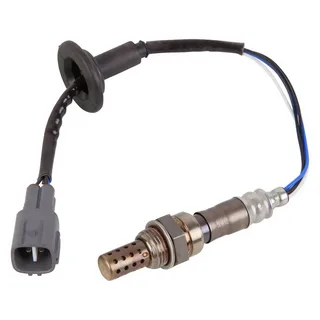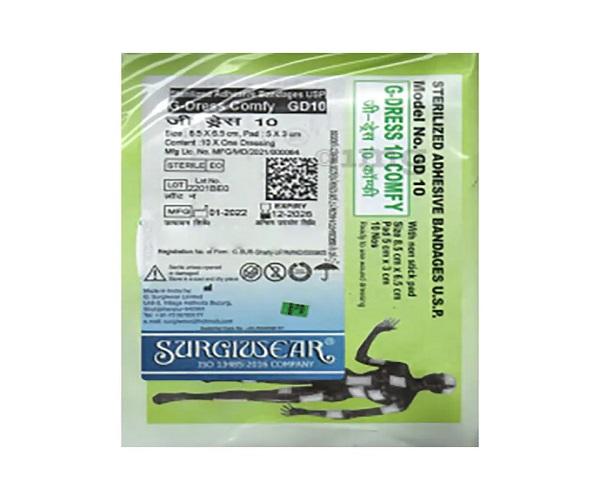How Toyota Corolla Oxygen Sensor Enhances Performance?

The oxygen sensor, an integral component in contemporary automotive systems, particularly enhances the Toyota Corolla's functionality. Positioned within the exhaust system, it meticulously monitors the oxygen levels in the exhaust gases. Toyota Corolla oxygen sensor primary task is to gather and transmit data regarding the air-fuel mixture to the vehicle's engine control unit (ECU). The ECU then uses this information to make necessary adjustments, ensuring optimal engine performance. The precise measurement of oxygen levels allows for maintaining an ideal air-fuel ratio, which is crucial for efficient fuel consumption and minimal emissions.
Vehicle's Environmental Impact
The Toyota Corolla benefits significantly from this technology, as it aids in achieving better fuel efficiency and reducing the vehicle's environmental impact. The oxygen sensor's role extends beyond just monitoring; it is a critical feedback mechanism ensuring the engine operates within its designed parameters.
The oxygen sensor helps the engine adapt to varying driving conditions by constantly providing real-time data, enhancing the overall driving experience. Thus, understanding the importance and functionality of the oxygen sensor is essential for appreciating how modern vehicles like the Toyota Corolla maintain their performance and environmental standards.
Role in Emissions Control
By continuously monitoring oxygen levels in the exhaust gases, the sensor helps the ECU regulate the air-fuel mixture, achieving a balance that minimises harmful emissions. This capability is particularly vital given the increasingly stringent global environmental regulations.
For vehicles like the Toyota Corolla, maintaining an optimal air-fuel ratio is key to reducing the output of pollutants such as carbon monoxide, hydrocarbons, and nitrogen oxides. The oxygen sensor, therefore, directly contributes to cleaner exhaust emissions by ensuring that combustion occurs as efficiently as possible.
Imbalances In The Air-Fuel Mixture
Complying with regulations, an effective oxygen sensor also helps to prevent damage to other components of the emissions control system, such as the catalytic converter. By identifying and correcting imbalances in the air-fuel mixture, the sensor aids in prolonging the life of these components, thereby reducing the need for costly repairs.
The Toyota Corolla, equipped with a functional oxygen sensor, thus not only meets emission standards but also operates more cleanly and efficiently. As a result, the vehicle has a lower environmental impact, making it a more eco-friendly choice for drivers.
Fuel Efficiency Benefits
The Toyota Corolla's oxygen sensor is pivotal in enhancing fuel efficiency.
Fuel consumption
The sensor enables the ECU to make precise adjustments by providing continuous data on the air-fuel mixture. This meticulous regulation ensures the engine operates at its most efficient level, optimising fuel consumption.
Petrol station
The direct benefit of this optimisation is evident in the vehicle's improved fuel economy, translating to fewer trips to the petrol station and reduced fuel expenses for drivers.
Environmentally friendly
Furthermore, enhanced fuel efficiency decreases carbon emissions, making the Toyota Corolla a more environmentally friendly option.
Combustion of fuel
As fuel prices continue to rise, maximising every litre of fuel becomes increasingly important. The oxygen sensor plays a crucial role in this aspect by ensuring the optimal combustion of fuel, reinforcing the Toyota Corolla's reputation for cost-effective and eco-friendly driving.
Impact on Engine Performance
The oxygen sensor is crucial for maintaining optimal engine conditions, significantly influencing the Toyota Corolla's power and responsiveness. The sensor helps the engine operate smoothly and efficiently by ensuring an ideal air-fuel mixture.
This balanced mixture allows for complete combustion, leading to better power delivery and enhanced driving dynamics. In particular, the Toyota Corolla benefits from this as it is known for its reliability and smooth performance.
Additionally, the oxygen sensor helps reduce engine knock, which can cause significant damage over time. By providing real-time data to the ECU, the sensor enables the engine to adjust parameters instantaneously, preventing knock and promoting longevity. Thus, the Toyota Corolla's engine can operate more smoothly, providing a more pleasant driving experience.
Long-Lasting Performance
Another advantage of a properly functioning oxygen sensor is its contribution to maintaining consistent engine temperature.
· By ensuring optimal combustion, the sensor helps avoid overheating, which can lead to engine wear and tear.
· This is especially important for maintaining the Toyota Corolla's reputation for durability and long-lasting performance.
· Finally, a well-maintained oxygen sensor supports the efficient operation of other engine components, such as spark plugs and fuel injectors.
· This interconnected efficiency results in less frequent maintenance and repairs, saving time and money for Toyota Corolla owners.
Diagnostic Capabilities
The oxygen sensor is integral to the onboard diagnostics system of the Toyota Corolla, providing continuous feedback to the engine control unit (ECU) regarding the air-fuel mixture. This constant stream of data allows the ECU to detect anomalies that might indicate potential issues within the engine or exhaust system.
One common diagnostic function of the oxygen sensor is identifying problems with the catalytic converter. A failing catalytic converter can lead to increased emissions and decreased engine performance, but early detection through the oxygen sensor's feedback can prevent these issues from escalating.
Diagnosing Fuel Injection Problems
The sensor aids in diagnosing fuel injection problems. If the air-fuel mixture deviates from the optimal ratio, the sensor's data helps the ECU make necessary adjustments or flag the issue for further inspection. This early detection is crucial for maintaining the Toyota Corolla's fuel efficiency and performance.
Another diagnostic capability involves monitoring the sensor itself. Over time, oxygen sensors can degrade or become contaminated, leading to inaccurate readings. The ECU uses the sensor's feedback to determine if the sensor needs replacement, ensuring the vehicle continues to operate efficiently.
By incorporating these diagnostic features, the oxygen sensor plays a vital role in maintaining the Toyota Corolla's overall health and performance, allowing for timely maintenance and repairs.
Common Issues and Maintenance
Over time, Toyota Corolla oxygen sensor can face various issues, impacting the vehicle's overall performance.
Check engine light
Common symptoms of a malfunctioning sensor include decreased fuel efficiency, erratic engine idling, and the activation of the check engine light. These signs indicate that the sensor is not accurately monitoring the air-fuel mixture, leading to inefficient combustion.
Routine maintenance
Regular maintenance is essential to ensure the sensor continues to function correctly. Vehicle manufacturers recommend inspecting the oxygen sensor as part of routine maintenance.
Signs of contamination
This includes checking for signs of contamination or damage, such as soot or oil deposits, which can impair the sensor's ability to provide accurate readings.
Regular inspections
In addition to regular inspections, the oxygen sensor should be replaced at intervals specified by the manufacturer, typically every 60,000 to 90,000 miles.
Efficiency
Keeping the oxygen sensor in good working condition enhances the Toyota Corolla's fuel efficiency and helps maintain lower emissions. Regular upkeep of the oxygen sensor is crucial to vehicle maintenance, ensuring the Toyota Corolla remains reliable and environmentally friendly.
Replacement and Cost Considerations
Several key factors should be evaluated when considering replacing an oxygen sensor in the Toyota Corolla. The vehicle's model year and the specific type of oxygen sensor required are primary considerations, as different models may necessitate unique sensors. Additionally, labour costs for professional installation can vary depending on the service provider and regional pricing norms.
The upfront expense of a new oxygen sensor might seem significant; however, long-term advantages often justify this cost. Improved fuel efficiency, enhanced engine performance, and reduced emissions contribute to overall cost savings and environmental benefits.
Oxygen Sensor Replacement
Selecting a high-quality sensor is crucial, as it ensures reliable and accurate readings, supporting the optimal functioning of the engine control unit (ECU).
It is also beneficial to source oxygen sensors from reputable manufacturers or authorised dealers, as this guarantees compatibility and durability. While aftermarket sensors offer cost savings, they could compromise performance or longevity.
Professional installation is generally recommended to ensure the sensor is correctly fitted and calibrated. Incorrect installation can lead to further complications, negating the benefits of replacement. By considering these factors, Toyota Corolla owners can make informed decisions about oxygen sensor replacement, ensuring their vehicle performs efficiently and reliably.
Comparing Different Models
Oxygen sensor technology exhibits notable variations across different Toyota Corolla models. With advancements in sensor design, newer models benefit from sensors that offer enhanced accuracy and longevity. These improvements translate into more reliable data for the engine control unit (ECU), ensuring better fuel efficiency and lower emissions.
When replacing an oxygen sensor, matching the specific requirements of the vehicle's model year is critical. Older models may require different sensors compared to newer versions due to changes in engine design and emissions standards.
Furthermore, it is important to note that the number and placement of oxygen sensors can differ between models. Some models feature additional sensors to meet more stringent emissions regulations, particularly newer vehicles.
Conclusion
This complexity means that selecting the Toyota Corolla oxygen sensor type is paramount for maintaining the vehicle's performance and compliance with environmental standards. Owners should consult the vehicle's manual or a trusted automotive professional to determine the sensor for their specific model. This ensures compatibility and optimal functioning. By paying attention to these details, drivers can ensure their Toyota Corolla continues to perform efficiently, maintaining its reputation for reliability and eco-friendliness.
FAQs
FAQ 1: What role does the oxygen sensor play in a Toyota Corolla?
Answer: The oxygen sensor monitors the level of oxygen in the exhaust gases and provides feedback to the engine control unit (ECU). This information helps optimize the air-fuel mixture for efficient combustion, resulting in better engine performance, improved fuel economy, and reduced emissions.
FAQ 2: How can a properly functioning Toyota Corolla oxygen sensor improve the performance?
Answer: A properly functioning Toyota Corolla oxygen sensor ensures the engine runs at its optimal air-fuel ratio, which leads to more efficient combustion. This improves throttle response, maximizes power output, and enhances fuel efficiency. It also reduces harmful emissions, contributing to a cleaner environment.
FAQ 3: What are the signs that my Toyota Corolla's oxygen sensor needs maintenance or replacement?
Answer: Signs that your oxygen sensor may need maintenance or replacement include poor fuel economy, rough idling, increased emissions, and the check engine light being illuminated. If you notice these symptoms, inspecting and addressing the oxygen sensor to maintain optimal vehicle performance is important.
|
Related Business Listings |





